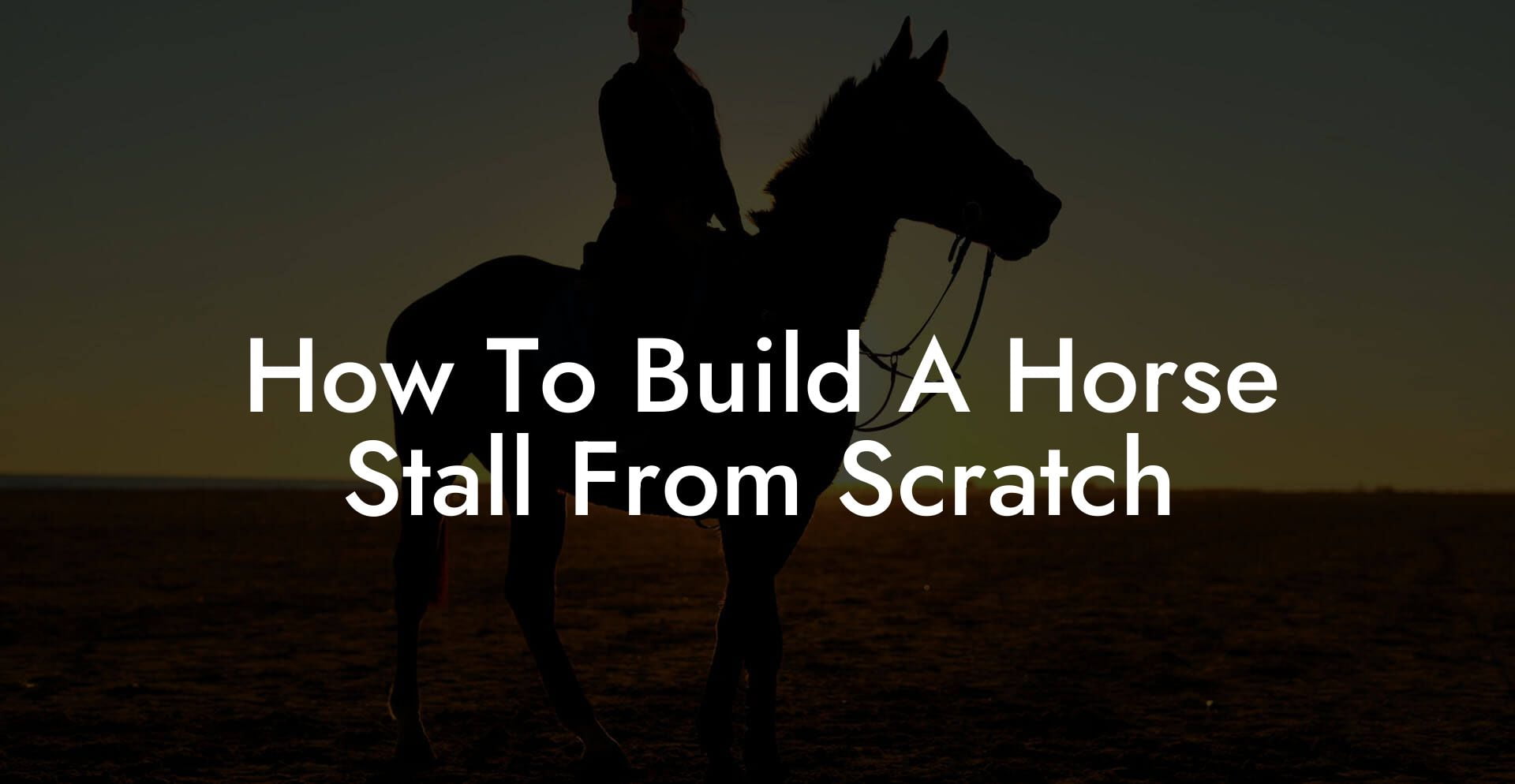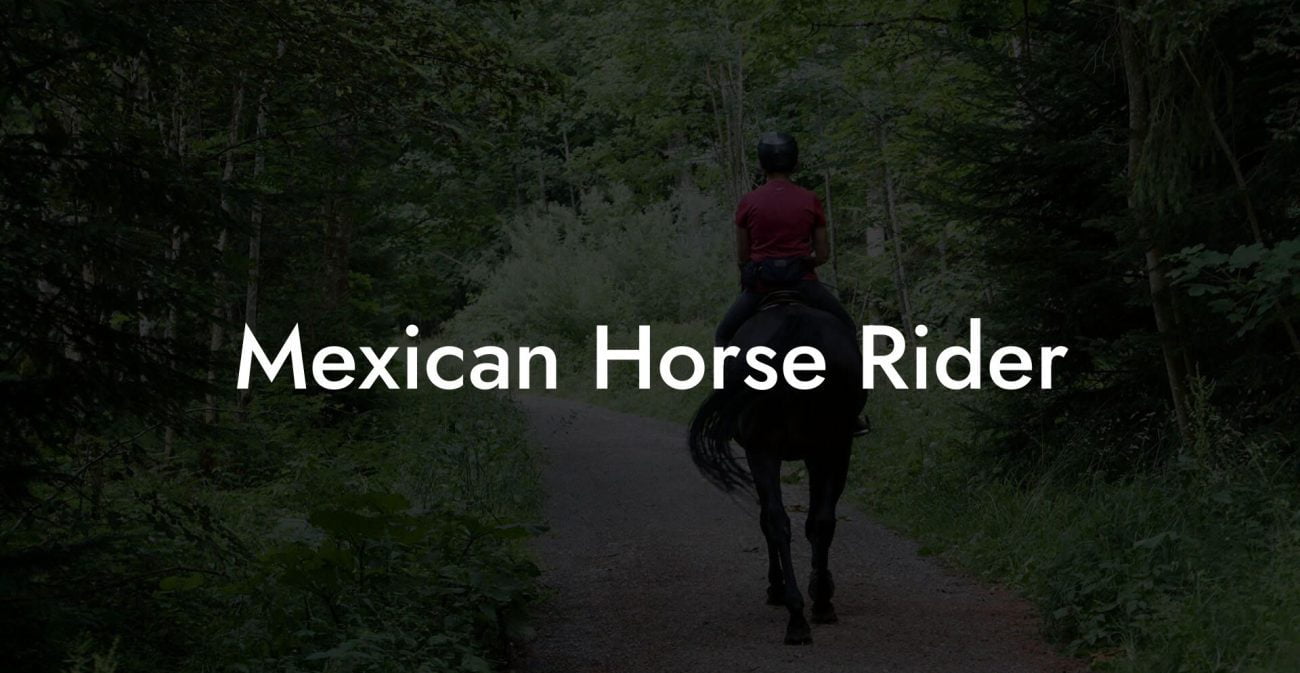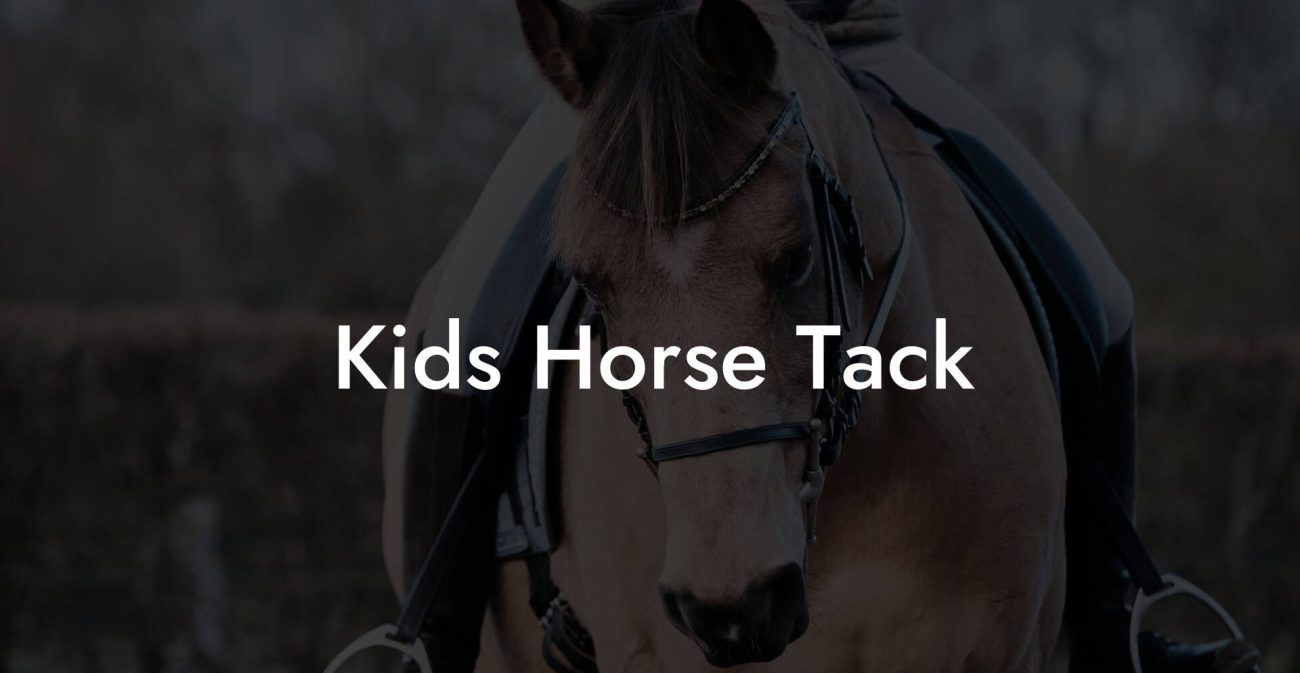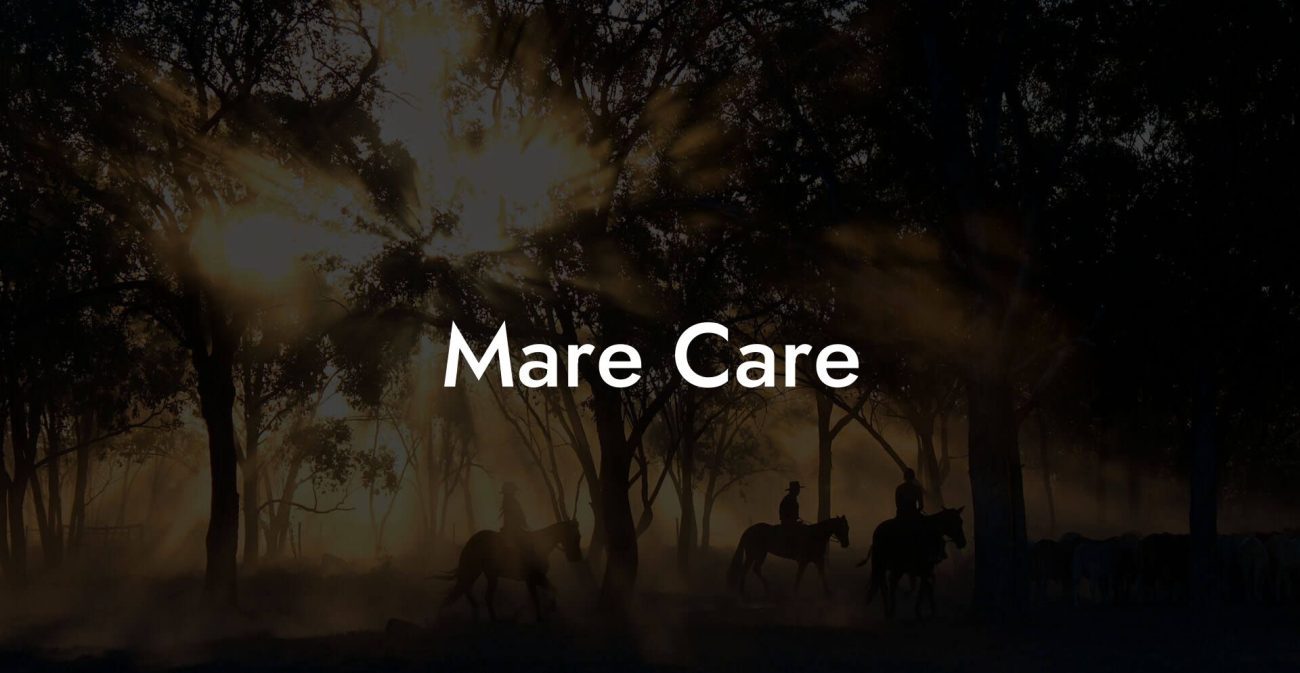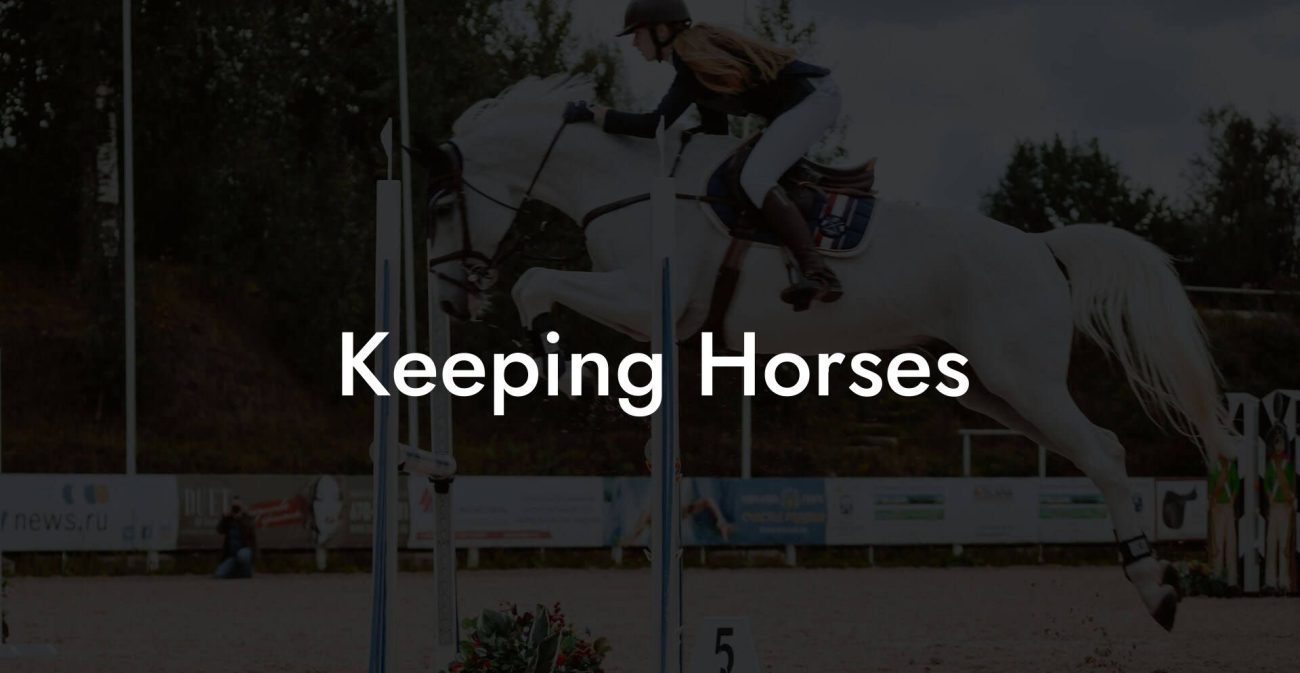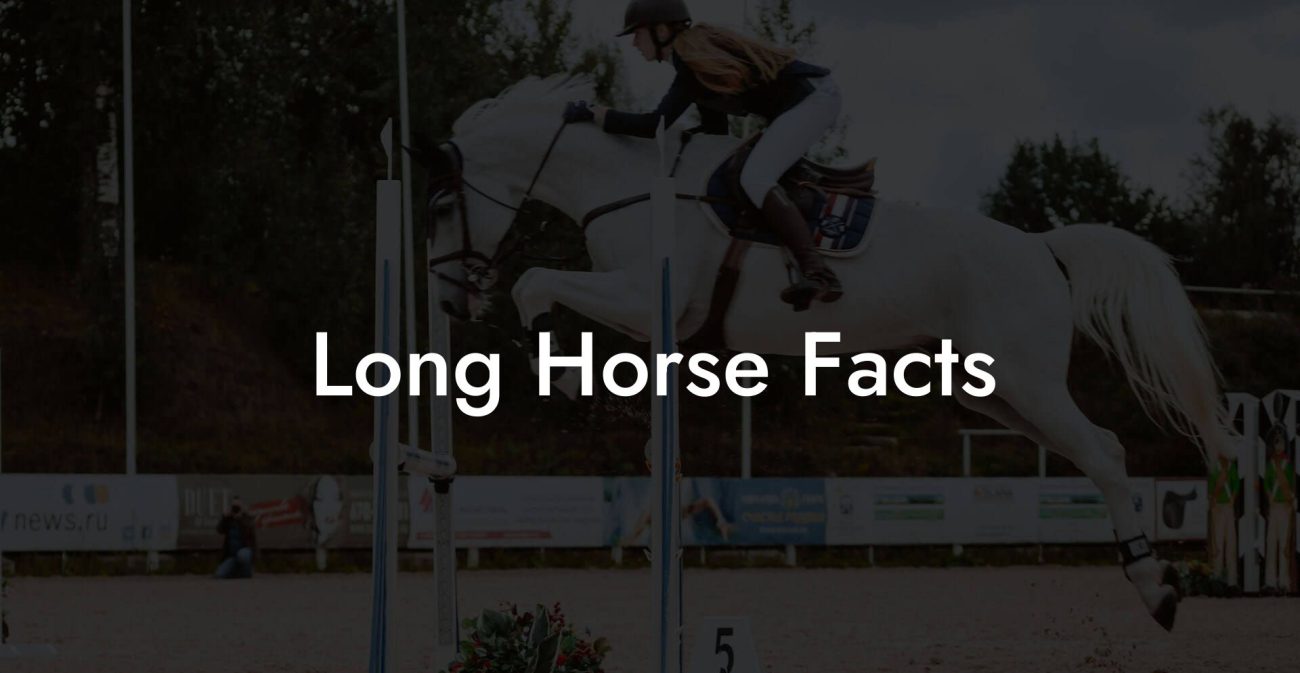Crafting your very own horse stall from scratch isn’t just a weekend DIY project, it's a bold statement of self-reliance, creativity, and love for your four-legged friend. Whether you’re a hands-on millennial or a Gen-Z enthusiast with a passion for equine care, this guide delivers a step-by-step blueprint to building the ultimate horse haven. Ready to mix a little sweat, humor, and a dash of ingenuity? Let’s saddle up and dive in!
Quick Links to Useful Sections
- The Art and Science of Building a Horse Stall: An Overview
- Step 1: Laying the Groundwork – Planning and Preparation
- Designing Your Dream Stall
- Gathering Permits and Setting a Budget
- Crafting a Detailed Material List
- Step 2: Building the Foundation and Structural Framework
- Site Selection and Preparation
- Pouring the Concrete Foundation
- Constructing the Framework
- Step 3: Designing the Stall Layout & Interior Features
- Partitioning the Stall – Combining Safety with Flow
- Optimizing Ventilation, Lighting, and Insulation
- Interior Stall Amenities for Equine Comfort
- Step 4: Adding the Finishing Touches – Roofing, Coatings, and Decorative Flourishes
- Choosing the Perfect Roof
- Weatherproofing and Protective Coatings
- Decorative Flourishes that Reflect Your Spirit
- Step 5: Safety, Compliance, and Environmental Considerations
- Meeting Building Codes and Regulations
- Incorporating Modern Safety Features
- Sustainability and Environmentally Friendly Practices
- Cost Considerations and Budget Optimization
- Breaking Down the Budget
- Cost-Saving Tips Without Sacrificing Safety
- Resources and Community Support: Your Next Steps
- Maintenance and Long-Term Care: Keeping Your Stall in Top Shape
- Regular Inspections and Repairs
- Seasonal Care and Upgrades
- FAQs: Building a Horse Stall from Scratch
- Your Journey to a Custom-Built, Modern Horse Haven
The Art and Science of Building a Horse Stall: An Overview
Building a horse stall from scratch involves strategic planning, resourcefulness, and a whole lot of heart. From designing a safe, comfortable, and functional space to choosing the right materials that can withstand weather challenges and the daily wear from horses, each decision shapes the outcome. This guide will equip you with everything from blueprint basics to advanced finishing touches, all peppered with contemporary tips that speak to our modern DIY spirit.
The modern equestrian isn’t afraid to get their hands a little dirty, whether you’re using reclaimed wood for rustic charm or state-of-the-art materials to ensure maximum hoof safety, you’ll find that building a stall is about blending tradition with innovation. We’ll explore topics such as stall design fundamentals, cost-effective and eco-friendly materials, safety standards, and even interior decoration ideas that double as stress-relief for both the builder and the horse.
Let’s break down the journey into digestible sections. In the sections that follow, you’ll discover how to:
- Develop a comprehensive design plan that balances functionality, aesthetics, and animal comfort.
- Select materials and tools tailored to your budget and style.
- Construct a robust foundation and framework that stands the test of time.
- Add modern amenities and safe components that ensure your horse’s wellbeing.
- Adopt a sustainable and affordable approach in every step of the build process.
Whether you're a seasoned horse owner or stepping into the world of equine care for the first time, this guide is your all-in-one resource to building a stall that meets the strictest safety standards while ensuring your horse experiences comfort and contentment.
Step 1: Laying the Groundwork – Planning and Preparation
Before you pick up a hammer or drive any nails, thorough planning is essential. Building a horse stall requires more than just a vague idea, counterintuitive design, unforeseen permits, and last-minute inspections are all part of the journey. Begin with these foundational steps:
Designing Your Dream Stall
Visualize the perfect space for your horse by brainstorming ideas, sketching designs, and even consulting with other horse enthusiasts online. Do you envision a minimalist, space-saving design, or a sprawling stable inspired by classic ranch aesthetics? Consider the following:
- Stall Dimensions: Ensure the size is adequate for the horse’s movement and comfort. A general recommendation for a standard stall is about 12x12 feet per horse, but adjust based on your horse’s size and personality.
- Ventilation and Light: Horses need proper airflow and natural light to prevent mold and maintain a calming atmosphere. Large windows or skylights can perform dual functions: energy saving and mood boosting.
- Accessibility: Plan easy access for both the horse and for cleaning purposes. Consider large, sliding doors instead of traditional hinged ones to reduce the risk of injury.
- Future Expansion: If you plan to add more stalls or amenities in the future, incorporate flexible design options early on.
As you plan, integrate semantic keywords like "horse stall DIY," "build your own horse stall," and "equine stall design" seamlessly into your design notes and online research. This habit helps you later when searching for additional resources or tapping into community advice.
Gathering Permits and Setting a Budget
Before the first shovel of dirt is moved, check with local building authorities to see if you need permits. Regulations vary by region, and failing to adhere to them might cause delays or fines. Set a realistic budget that covers:
- Materials (wood, metal, roofing, concrete, etc.)
- Tools and equipment rentals
- Labor costs if you plan on hiring help for certain specialized tasks
- Unexpected expenses (always have a contingency budget!)
Keep your design plans, budget spreadsheet, and permit paperwork organized in one place. Digital tools, mobile apps, or even a dedicated binder can help streamline this process and ensure nothing gets lost in the shuffle.
Crafting a Detailed Material List
A comprehensive material list can make or break your DIY horse stall build. Work with a materials calculator or consult with experienced builders to make sure you have everything from heavy-duty 4x4 posts to weather-resistant roofing panels. Here’s what you might need:
- Pressure-treated lumber for the frame
- Concrete mix for the foundation
- Galvanized nails and screws
- Wire mesh or sturdy boards for partitions and windows
- Insulation materials if you live in a cooler climate
- Paint or sealant resistant to barnyard wear and tear
- Tools such as saws, drills, hammers, and levelers
Having these details mapped out early helps prevent last-minute store trips and minimizes the temptation for a DIY “quick fix” that might compromise safety.
Step 2: Building the Foundation and Structural Framework
The foundation of your horse stall is non-negotiable, it must be sturdy, level, and durable. Think of it as the heartbeat of your construction; if it falters, the entire structure can be at risk.
Site Selection and Preparation
Location is key. Choose a well-drained site free from standing water and flooding risks. Prepare the ground by:
- Clearing any debris, roots, or rocks
- Leveling the surface to facilitate even concrete pouring
- Marking out boundaries using string lines and stakes
Pro tip: Work with a friend who has a passion for landscaping and environmental care, they might help retrofit your design with natural water redirection solutions and keep everything eco-friendly.
Pouring the Concrete Foundation
The concrete slab is the bedrock of safety and stability. Follow these steps for a robust foundation:
- Excavate: Dig the necessary footer trenches according to your design specifications.
- Formwork: Construct wooden forms to contain the concrete while it sets.
- Rebar Reinforcement: Lay down a grid of steel rebar to add tensile strength and prevent cracking.
- Pouring: Mix the concrete and pour it evenly into the forms. A mechanical mixer is ideal, but a strong milkshake-of-concrete mix by hand can work for smaller projects.
- Smoothing and Curing: Smooth the surface with a trowel and allow ample time for curing, ideally 48 hours minimum before any heavy work begins.
This process not only ensures safety but also boosts the longevity of your stall, qualities that are as valued as your horse’s trust.
Constructing the Framework
With the foundation set, it’s time to raise the skeleton of your horse stall, a blend of creative design and technical precision.
Choosing the Right Lumber: Use pressure-treated lumber or other weather-resistant materials to combat the elements. The skeletal framework should include:
- Vertical posts placed at regular intervals
- Horizontal beams that create a secure grid
- Diagonal supports for added structural integrity
Precise measurements and level checking are key. Invest in a quality spirit level and measuring tape; the slightest misalignment can create long-term issues ranging from uneven floors to structural instability.
For a modern aesthetic relevant to trendy DIY builders, consider leaving some of the natural wood grain exposed or painting with eco-friendly, vibrant colors that keep the space lively while still focusing on safety and longevity.
Step 3: Designing the Stall Layout & Interior Features
Once the skeleton of your stall is complete, you can shift your focus toward the finer details that transform a basic build into a personalized horse haven. This stage emphasizes both style and functionality.
Partitioning the Stall – Combining Safety with Flow
Horse stalls are all about balance, the dance between spacious freedom for the horse and compartmentalization for various activities like feeding, resting, and grooming. Consider installing:
- Removable Dividers: These are perfect for adaptive layouts. They can be reconfigured as needs change or even removed entirely during special events.
- Sliding or Folding Doors: Enhance accessibility while ensuring they’re secure enough to prevent accidental escapes.
- Internal Storage Solutions: Built-in cubbies, pegboards, or even modular shelving for tools and feed add to the practicality of the space.
Strategic partitioning isn’t just about compartmentalization, it’s about keeping your horse comfortable and safe while making daily chores as breezy as your favorite weekend adventure.
Optimizing Ventilation, Lighting, and Insulation
A well-designed stall must keep the air fresh and the atmosphere bright. Natural light not only elevates moods but also reduces the risk of dampness. Here are some trends you might consider:
- Skylights and Large Windows: These allow sunlight to pour in throughout the day. Modern energy-efficient windows can also improve insulation.
- Ceiling Fans and Ventilation Systems: Use these to maintain steady airflow, which is key to preventing respiratory issues in horses and reducing humidity.
- Insulation Layers: Particularly important if you reside in an area with extreme temperatures. Consider eco-friendly insulation materials that also save energy.
Integrate sustainable options into your design. After all, you’re not only building a stall but a future-proof space that melds functionality with a vibrant, modern aesthetic.
Interior Stall Amenities for Equine Comfort
The final interior touches significantly affect your horse’s day-to-day life. Think about:
- Non-Slip Flooring: Rubber mats or treated concrete with a textured finish can keep hooves safe and reduce fatigue.
- Feeding and Watering Stations: Design dedicated zones that make access to water and feed as seamless as your favorite app interface.
- Wall-Mounted Racks: For storing grooming tools and equipment in an organized, aesthetically pleasing layout.
- Soundproofing Elements: Horses can be sensitive to noise, so consider materials that dampen external sounds for a calmer environment.
These thoughtful touches not only ensure a healthier, happier environment for your horse but also give your stall a unique personality that stands out in today’s social media-driven world.
Step 4: Adding the Finishing Touches – Roofing, Coatings, and Decorative Flourishes
With the main structure and interior elements in place, it’s time to focus on the final details that will make your stall not just functional but downright inspiring.
Choosing the Perfect Roof
The roof is your stall’s first line of defense against the elements. Options abound, from metal roofing to durable asphalt shingles or even eco-friendly green roofs. Consider:
- Durability and Maintenance: Choose materials that can withstand heavy rains, winds, and the occasional falling branch. Metal roofs, while modern and sleek, might be noisier during storms; adding insulation layers can help mitigate that.
- Energy Efficiency: Reflective coatings or solar panel integrations can offer extra benefits, making your stall the envy of eco-warriors everywhere.
- Aesthetic Appeal: Bold, modern lines combined with natural textures can bridge the gap between classic barn aesthetics and contemporary design.
Weatherproofing and Protective Coatings
A lasting horse stall must be able to stand up to outdoor conditions. Use protective sealants, water-resistant paints, or even stain treatments to safeguard your investment. These coatings not only prolong the life of the structure but also allow you to incorporate vibrant colors that reflect your personal style.
Think of weatherproofing as the finishing eyeliner on your project, it seals in every detail, ensuring both longevity and visual flair.
Decorative Flourishes that Reflect Your Spirit
Don’t be afraid to let your personality shine through. Add custom signage, murals, or even graffiti-style accents (if you’re into that kind of urban chic) that set your stall apart. A splash of neon under-lighting or themed decor dedicated to your favorite equestrian memories can provide a sense of fun and creativity.
These final touches not only elevate the stall’s appearance but also create an inviting sanctuary where both you and your horse can truly feel at home.
Step 5: Safety, Compliance, and Environmental Considerations
Safety is paramount when designing a space that must house a living creature as majestic as a horse. From building codes to practical everyday safety measures, the following considerations are crucial:
Meeting Building Codes and Regulations
Research local regulations regarding stable construction. Permits, zoning laws, and even fire codes need to be adhered to closely. Engaging with local authorities early in the planning process can save you from costly setbacks.
Incorporating Modern Safety Features
Aside from structural integrity, focus on features that ensure the horse’s well-being:
- Non-toxic paints and sealants that won’t affect animal health.
- Strategically placed lighting and emergency exits.
- Anti-slip surfaces not only in the stall but also in passageways.
- Secure door locks and latches to avoid unplanned escapes.
Safety features are not optional, they’re an investment in the future health of the space and the comfort of your horse.
Sustainability and Environmentally Friendly Practices
Eco-conscious building doesn’t have to be a buzzword. Opt for sustainable materials where possible. Reclaimed wood, recycled metal, and energy-efficient insulation options reduce your carbon hoofprint while still delivering top-notch quality. Consider solar-powered lighting or rainwater collection systems to support an eco-friendly stable operation.
Balancing safety with sustainability not only protects the environment but also appeals to the modern, socially aware builder.
Cost Considerations and Budget Optimization
Money talks, and it certainly does in the world of DIY stable construction. Finding a balance between functionality, durability, and cost efficiency is key.
Breaking Down the Budget
Create a detailed budget that allocates funds in the following areas:
- Design and Permitting: Fees, professional consultations, and any pre-construction planning costs.
- Materials: Lumber, concrete, roofing materials, and finishing supplies. Bulk purchasing and getting quotes from multiple suppliers can lead to amazing cost savings.
- Labor (if applicable): Even if you’re doing the majority of the work yourself, consider specialized tasks that might require professional input.
- Contingencies: Always set aside 10-15% of the total budget for unforeseen expenses or changes in design during construction.
Cost-Saving Tips Without Sacrificing Safety
Looking to optimize your budget? Here are some smart tips:
- DIY vs. Professional Help: Know when to roll up your sleeves and when to call in the experts. Some heavy-lifting tasks, like pouring the foundation, may be more cost-effective when outsourced.
- Shop Smart: Look for reclaimed materials or sales at local hardware stores. Joining online forums and local community boards can also lead to insider deals.
- Phase Your Project: If the budget is tight, consider building in phases with a comprehensive plan. This approach gives you time to save and adjust designs as needed.
By carefully mapping out expenses and searching for creative cost-saving solutions, you achieve both a durable, high-quality stall and financial peace of mind.
Resources and Community Support: Your Next Steps
Building a horse stall from scratch can feel like a monumental task, but remember, you’re joining a passionate community of DIYers and horse enthusiasts who share your vision. Don’t hesitate to seek out local building groups, equestrian clubs, or online forums where advice, troubleshooting tips, and success stories abound.
Here are some valuable resources and support networks to explore:
- Online DIY Communities: Websites like Instructables, Reddit’s r/DIY, and dedicated Facebook groups can offer step-by-step tutorials and firsthand stories from others who have built their own stalls.
- Local Equestrian Associations: These organizations often host workshops or seminars on stable building, horse care, and safe construction techniques.
- Hardware and Garden Centers: Many stores offer classes or have knowledgeable staff who can suggest innovative, budget-friendly materials.
- Consulting Professionals: Don’t overlook experts like architects, builders, or equine facility managers who can provide insights tailored to your specific project.
Embrace the collaborative spirit of modern DIY culture, share your progress on social media, learn from others’ experiences, and contribute your own tips. The more knowledge you gather, the smoother your construction journey will be.
Your next steps are simple: plan wisely, build confidently, and celebrate every milestone along the way. This is more than just constructing a horse stall, it’s creating a legacy of care, innovation, and community.
Maintenance and Long-Term Care: Keeping Your Stall in Top Shape
Your beautifully built horse stall is built to last, but like any masterpiece, it requires regular upkeep to stay in prime form. Long-term maintenance not only ensures a safe environment for your horse but also preserves your investment for years to come.
Regular Inspections and Repairs
Just as you wouldn’t skip a doctor’s appointment, set a schedule for routine inspections. Here’s what to keep an eye on:
- Structural Integrity: Check beams, posts, and connection points for signs of wear, rot, or termite damage.
- Roofing: Inspect for loose shingles, rust, or water pooling after storms.
- Flooring: Make sure that non-slip surfaces remain effective and repair any cracks promptly to prevent tripping hazards.
- Paint and Sealant: Apply a fresh coat of weatherproofing sealant or paint every few years to extend the stall’s life.
Seasonal Care and Upgrades
Seasonal changes demand seasonal care. In winter, ensure that drainage systems are working efficiently to prevent ice buildup, while in hotter months, consider additional ventilation or cooling solutions. Upgrading the stall over time with modern accessories or energy-saving modifications can make routine maintenance more effective.
Remember: a well-maintained stall not only improves the quality of your horse’s life but also boosts resale value and community bragging rights!
FAQs: Building a Horse Stall from Scratch
Here are some frequently asked questions to help you navigate the challenges of building your very own horse stall:
1. What are the basic dimensions I should consider for a single horse stall?
A typical stall size is around 12x12 feet; however, dimensions can be adjusted based on the specific needs and size of your horse. Larger breeds may require even more space to remain comfortable.
2. Do I need a permit to build a horse stall on my property?
Permit requirements vary by region. It’s essential to consult with your local building authority to ensure your stall complies with zoning laws, building codes, and any necessary permits are acquired before construction.
3. What are some cost-effective materials for constructing a durable horse stall?
Pressure-treated lumber, reclaimed wood, and recycled metal are excellent choices. It’s wise to research local suppliers and compare prices, as these materials provide longevity and durability without breaking the bank.
4. How can I ensure proper ventilation and natural lighting in my stall?
Incorporating large windows, skylights, and strategic ventilation systems such as ceiling fans can ensure there’s sufficient airflow and natural light, all vital for preventing dampness and creating a calm, healthy environment.
5. What are some top safety features I should include?
Prioritize non-slip flooring, secure door locks, and sturdy partitions. Use non-toxic paints and environmentally friendly materials to ensure both your horse’s safety and health.
6. Are there eco-friendly options for building a horse stall?
Absolutely! Consider using reclaimed wood, sustainable insulation, and energy-efficient roofing options. Incorporating solar-powered lights or rainwater harvesting systems can also lower your environmental impact.
7. How long does it typically take to build a horse stall?
Depending on the complexity of the design and the size of your project, a basic horse stall could take a few weekends to a couple of months if working alone or with a small team.
8. Can I design a horse stall that’s both aesthetically pleasing and practical?
Yes! Modern horse stall designs blend functionality with stylish elements, and creative touches like custom lighting or thematic decor can transform your stall into both a safe space for your horse and an Instagram-worthy project.
9. Is professional help recommended at any stage of the build?
If you’re unsure about structural elements or local regulations, it’s always wise to consult with an experienced builder or contractor. Even if you plan on handling most of the work yourself, professional advice can save you time and prevent costly mistakes.
10. How often should I perform maintenance on the stall?
Regular inspections are key. Plan to inspect critical elements of your stall every season, and schedule any necessary repairs or upgrades as needed.
Your Journey to a Custom-Built, Modern Horse Haven
Building your own horse stall is a celebration of innovation, passion, and the timeless bond between you and your equine companion. With every measured cut, every poured stone, and every creative flourish, you’re crafting more than just a structure, you’re building a legacy that speaks to modern DIY ingenuity and the enduring spirit of care.
Whether you’re updating an old barnyard design or venturing into uncharted territory with a futuristic, eco-friendly stall, your journey through design, construction, and personalization transforms the process into an art form. Embrace the challenges, celebrate the setbacks as learning opportunities, and remember: in the world of horse stall building, every nail and brushstroke is a step toward a safer, more inspiring future for both you and your horse.
So roll up your sleeves, fire up your creative energy, and let this guide be your trusted companion. From the blueprint to the final coat of paint, every moment is a testament to the blend of technical know-how and heartfelt passion that defines modern equine care.
Your dream stable is within reach, build it, personalize it, and enjoy the journey of transforming raw materials into a space where your horse feels right at home while you enjoy the satisfaction of a job exceptionally well done.

